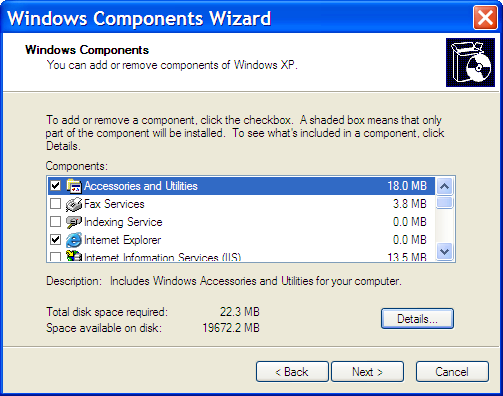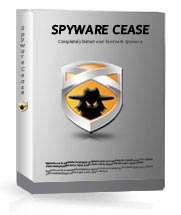
Simple Ways to Increase the Performance of your Windows XP PC in 5 Minutes or Less

XP Speed Secret #1: Disable Extra Startup Programs
There are certain programs that Windows will start every time you boot up your system, and during the startup phase, they're all competing for a slice of your CPU speed. Extra or unwanted items
in the startup list will definitely increase your startup time, perhaps by several minutes. Some common examples are things related to AOL, RealPlayer, Napster, instant messengers, and video managers.
If you're not sure about an item, no big deal. You can turn it off, restart your PC, and see if everything seems to work. If not, you can always go back and re-enable an item in the Startup list. This tip alone should speed up your start-up by 250%. Here are is what you have to do:
1. Go to Start button Run
2. Type "msconfig", without quotations
3. Hit enter key or click the OK button
4. A System Configuration Utility window will show up
5. Click the Startup tab
6. In the Startup tab you will see several boxes and some of them will selected (checked). All you have to do is to uncheck extra items that are of no use. If you run an antivirus program it is not recommended to uncheck it.
7. After making you choices press the OK button, you will be prompted to restart computer to apply changes.
8. After restarting your computer a dialogue will be displayed. You can check the option for not showing this dialogue every time your PC reboots.

1. Go to Start button Run
2. Type "msconfig", without quotations
3. Hit enter key or click the OK button
4. A System Configuration Utility window will show up
5. Click the Startup tab
6. In the Startup tab you will see several boxes and some of them will selected (checked). All you have to do is to uncheck extra items that are of no use. If you run an antivirus program it is not recommended to uncheck it.
7. After making you choices press the OK button, you will be prompted to restart computer to apply changes.
8. After restarting your computer a dialogue will be displayed. You can check the option for not showing this dialogue every time your PC reboots.

XP Speed Secret #2: Remove Spyware, Adware,
and Malware
Have you scanned your system for spyware, adware and other unwanted pests? 1 of 6 computers has some sort of Spyware or Malware! They dramatically slow down your computer because they use resources to generate popup ads, send spam, and often interfere with the operation of good programs. If you haven’t scanned recently, we recommend a free scan from a good anti-spyware program. We prefer to use stand-alone, high quality anti-spyware programs like XoftSpy Pro, which give us the ability to scan and repair these problems in seconds.
FINAL NOTE: Recent testing has shown that stand-alone programs do a much better job than the "all-in-one” packages (eg.Norton Internet Security) at detecting spyware, adware, and malware.
and Malware
Have you scanned your system for spyware, adware and other unwanted pests? 1 of 6 computers has some sort of Spyware or Malware! They dramatically slow down your computer because they use resources to generate popup ads, send spam, and often interfere with the operation of good programs. If you haven’t scanned recently, we recommend a free scan from a good anti-spyware program. We prefer to use stand-alone, high quality anti-spyware programs like XoftSpy Pro, which give us the ability to scan and repair these problems in seconds.
FINAL NOTE: Recent testing has shown that stand-alone programs do a much better job than the "all-in-one” packages (eg.Norton Internet Security) at detecting spyware, adware, and malware.
Click on image to get the download link

XP Speed Secret #3: Optimize Display Settings

XP Speed Secret #3: Optimize Display Settings
Windows XP can look sexy but displaying all the visual items can waste system resources.
To optimize:
1. Click the Start button
2. Select Control Panel
3. Double-click the System icon
4. Click the Advanced tab
5. In the Performance box click Settings
6. Leave only the following ticked:
a. Show shadows under menus
b. Show shadows under mouse pointer
c. Show translucent selection rectangle
d. Use drop shadows for icons labels on the desktop
e. Use visual styles on windows and buttons
7. Finally, click Apply and OK


XP Speed Secret #4: Speed-Up File Browsing
You may have noticed that every time you open "My Computer” to browse folders that there is a slight delay. This is because Windows XP automatically searches for network files and printers every time you open Windows Explorer.


XP Speed Secret #5: Reduce Page File Size
Page file size is not constant by default. Due to this, the operating system has to resize the file each time more space is required. This is a performance overhead. All you have to do is to set the file size to a reasonable limit.

To optimize:
1. Click the Start button
2. Select Control Panel
3. Double-click the System icon
4. Click the Advanced tab
5. In the Performance box click Settings
6. Leave only the following ticked:
a. Show shadows under menus
b. Show shadows under mouse pointer
c. Show translucent selection rectangle
d. Use drop shadows for icons labels on the desktop
e. Use visual styles on windows and buttons
7. Finally, click Apply and OK


XP Speed Secret #4: Speed-Up File Browsing
You may have noticed that every time you open "My Computer” to browse folders that there is a slight delay. This is because Windows XP automatically searches for network files and printers every time you open Windows Explorer.
To fix this and to increase browsing speed significantly:
1. Double-click on My Computer
2. Click the Tools menu
3. Select Folder Options
4. Click on the View tab.
5. Uncheck the Automatically search for network folders and printers check box
6. Click Apply
7. Click OK
8. Reboot your computer
1. Double-click on My Computer
2. Click the Tools menu
3. Select Folder Options
4. Click on the View tab.
5. Uncheck the Automatically search for network folders and printers check box
6. Click Apply
7. Click OK
8. Reboot your computer


XP Speed Secret #5: Reduce Page File Size
Page file size is not constant by default. Due to this, the operating system has to resize the file each time more space is required. This is a performance overhead. All you have to do is to set the file size to a reasonable limit.
Follow the steps:
1. Right-click My Computer, Select Properties
2. Click the Advanced tab
3. Click the Settings button under the Performance section
4. Click the Advanced tab
5. Under the Virtual Memory section click the Change button
6. "Virtual Memory" dialogue box will appear (also shown in the figure below)
7. Highlight the C: drive containing page file
8. Select the Custom Size radio button and give same values in Initial size and Maximum size fields: If you have less than 512MB of memory, leave the page file at its default size. If you have 512MB or more, change the ratio to 1:1 page file size to physical memory size.
9. Click Set, then OK buttons to apply the changes


XP Speed Secret #6: Clean Your System Registry
Of course, the fastest and easiest way to speed-up your computer is to allow a software program to do it for you! Although you will find that all of the adjustments in this book will speed up your system, the most effective and easiest way to give your computer blazing speed is to clean up your system’s Registry.
Your computer is like your car: it needs periodic maintenance to keep it running at optimum performance. Installing and un-installing programs, surfing the Internet, emailing, and other everyday activities create a sort of "sludge” that builds up in your computer over time, much like an automobile engine. After a while, it doesn't startup like when it was new, it stalls unexpectedly, and performance is sluggish on the (information) highway.

download link
We strongly recommend running a free Registry scan to find out how many errors you computer is hiding from you. Your computer will likely have hundreds of Registry errors that are dramatically slowing down the potential speed and performance

XP Speed Secret #7: Run Disk Clean-Up
Both Windows and application programs tend to leave temporary files lying around on your hard drive, taking up space. A hard drive that is close to being "full” can cause Windows to slow down or interfere with efficient disk access and virtual memory operations. If you surf the web a lot, your temporary internet files folder can become quite large, causing Internet Explorer to slow down or malfunction. Cleaning up unneeded files, scanning for disk errors and defragmenting the hard drive can help to restore some zip to your system. Try to run once a month for peak performance.
1. Right-click My Computer, Select Properties
2. Click the Advanced tab
3. Click the Settings button under the Performance section
4. Click the Advanced tab
5. Under the Virtual Memory section click the Change button
6. "Virtual Memory" dialogue box will appear (also shown in the figure below)
7. Highlight the C: drive containing page file
8. Select the Custom Size radio button and give same values in Initial size and Maximum size fields: If you have less than 512MB of memory, leave the page file at its default size. If you have 512MB or more, change the ratio to 1:1 page file size to physical memory size.
9. Click Set, then OK buttons to apply the changes

XP Speed Secret #6: Clean Your System Registry
Of course, the fastest and easiest way to speed-up your computer is to allow a software program to do it for you! Although you will find that all of the adjustments in this book will speed up your system, the most effective and easiest way to give your computer blazing speed is to clean up your system’s Registry.
Your computer is like your car: it needs periodic maintenance to keep it running at optimum performance. Installing and un-installing programs, surfing the Internet, emailing, and other everyday activities create a sort of "sludge” that builds up in your computer over time, much like an automobile engine. After a while, it doesn't startup like when it was new, it stalls unexpectedly, and performance is sluggish on the (information) highway.

download link
We strongly recommend running a free Registry scan to find out how many errors you computer is hiding from you. Your computer will likely have hundreds of Registry errors that are dramatically slowing down the potential speed and performance

XP Speed Secret #7: Run Disk Clean-Up
Both Windows and application programs tend to leave temporary files lying around on your hard drive, taking up space. A hard drive that is close to being "full” can cause Windows to slow down or interfere with efficient disk access and virtual memory operations. If you surf the web a lot, your temporary internet files folder can become quite large, causing Internet Explorer to slow down or malfunction. Cleaning up unneeded files, scanning for disk errors and defragmenting the hard drive can help to restore some zip to your system. Try to run once a month for peak performance.
1. Double-click the My Computer icon.
2. Right-click on the C: drive
3. Select Properties
4. Click the Disk Cleanup button (to the bottomright of the Capacity pie graph)
5. Select / check Temporary Internet Files and Recycle Bin
6. Click OK
2. Right-click on the C: drive
3. Select Properties
4. Click the Disk Cleanup button (to the bottomright of the Capacity pie graph)
5. Select / check Temporary Internet Files and Recycle Bin
6. Click OK


XP Speed Secret #8: Enable Direct Memory Access (DMA)
1. Right-click on My Computer, select Properties
2. Select the Hardware tab
3. Click the Device Manager button
4. Double-click IDE/ATAPI controllers
5. Double-click on the Primary IDE Channel
6. Click on the Advanced Settings tab (as shown in figure) The tab may or may not be available for each option. It is only available in Primary and Secondary Channels.
7. Set the Transfer Mode to "DMA if Available" both for Device 1 and 0
8. Click OK
9. Perform the same operation for other items in the list, if applicable.
2. Select the Hardware tab
3. Click the Device Manager button
4. Double-click IDE/ATAPI controllers
5. Double-click on the Primary IDE Channel
6. Click on the Advanced Settings tab (as shown in figure) The tab may or may not be available for each option. It is only available in Primary and Secondary Channels.
7. Set the Transfer Mode to "DMA if Available" both for Device 1 and 0
8. Click OK
9. Perform the same operation for other items in the list, if applicable.


XP Speed Secret #9: Disable File Indexing
Indexing Services is a small little program that uses large amounts of memory and can often make a computer endlessly loud and noisy. This system process indexes and updates lists of all the files that are on your computer. It does this so that when you do a search for something on your computer, it will search faster by scanning the index lists. If you don’t search your computer often, this system service is completely unnecessary.
To disable do the following:
1. Click Start button
2. Select the Control Panel
3. Double-click Add/Remove Programs
4. Click the Add/Remove Window Components icon on the left side of the window
5. This may take a few seconds to load. Be patient.
6. Look for the "Indexing Services” component in the list
7. Uncheck the Indexing Services
8. Click Next
9. Click Finish
1. Click Start button
2. Select the Control Panel
3. Double-click Add/Remove Programs
4. Click the Add/Remove Window Components icon on the left side of the window
5. This may take a few seconds to load. Be patient.
6. Look for the "Indexing Services” component in the list
7. Uncheck the Indexing Services
8. Click Next
9. Click Finish


XP Speed Secret #10: Remove Un-Used Programs & Files
You may have a bunch of software packages on your hard drive that are no longer needed, or they were gratuitously installed when you downloaded some other package. Toolbars, file-sharing programs, free email enhancers, online shopping "companions" and download managers are notorious for this practice. These uninvited guests can put a big drag on your startup time, cause web pages to load slowly, and generally bog down your computer.
1. Click Start button
2. Select Control Panel
3. Double-click Add/Remove Programs icon
4. See what programs are installed that you don’t typically use
5. Select the Remove button for the ones you know you don't need
If you’re unsure about some programs, do a web search to learn about the ones that you need to keep



Disclaimer
The Windows speed tips presented in this document are provided as a courtesy to others. Products mentioned are within the scope of a user's need, in our opinion, and may not be appropriate for you for your home or commercial use. While we expect that the information we present here is accurate and should be helpful, we make no guarantees as to its accuracy,
applicability, or adequacy to protect your system or that the information is up to date. We do not have experience with all the speed tips mentioned on these pages. Products and techniques mentioned here may not be appropriate or adequate for your individual needs. If you choose to rely on information presented in this document, you do so at your own risk. Do the above procedures at your own risk. Penica Official Website is not responsible for any damage the procedures may cause to your computer
Orice Sistem De Operare are nevoie de intretinere...Daca vreti sa functioneze bine trebuie curatat din cand in cand de registrii si de alte componente ale programelor instalate,si dezinstalate ulterior,care nu se sterg odata cu scoaterea programului din uz... Recomand sa instalati unul dintre programele de curatare de mai jos,dar ramane doar la latitudinea dumneavoastra daca acceptati aceasta recomandare:
1. Ccleaner
3. jkDefrag
Solutii si programe utile puteti gasii in sectiunea software din acest site
Folosind aceste programe si unele din trucurile de mai sus,veti avea aspectul Vista mult dorit,sau un
XP CU O VITEZA DE REACTIE SI O PERFORMANTA DE INVIDIAT


